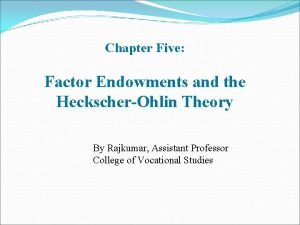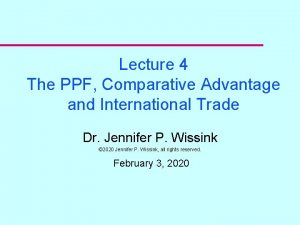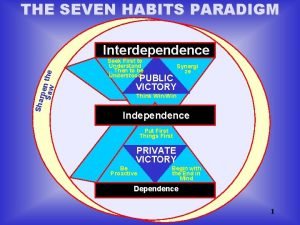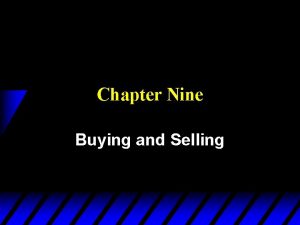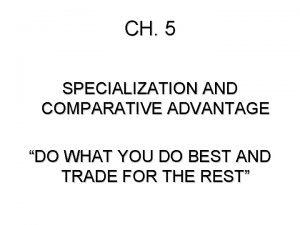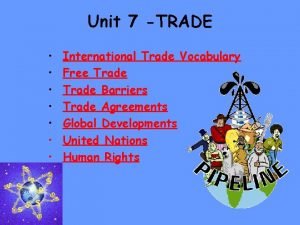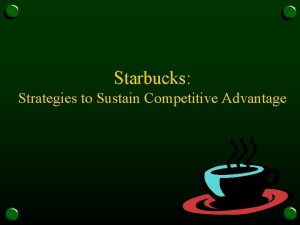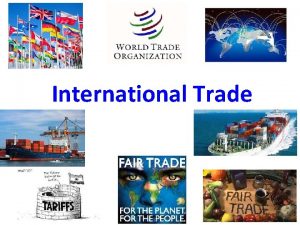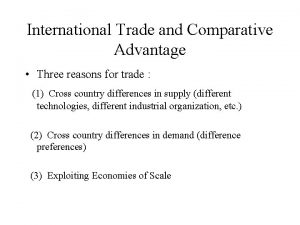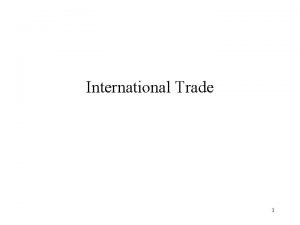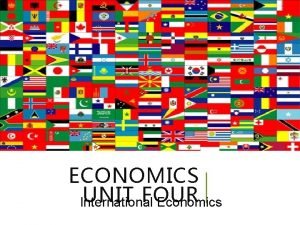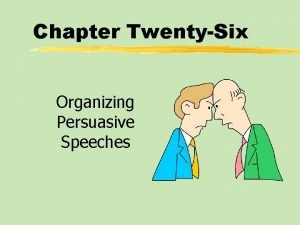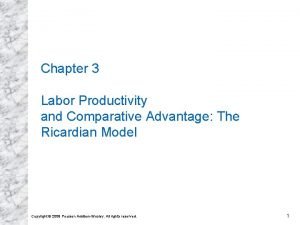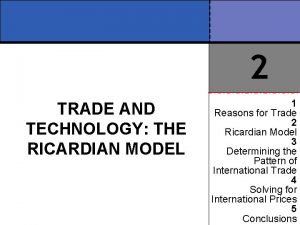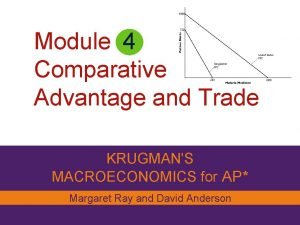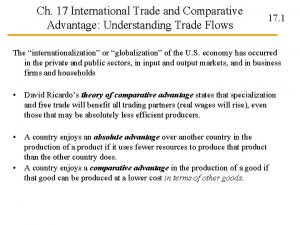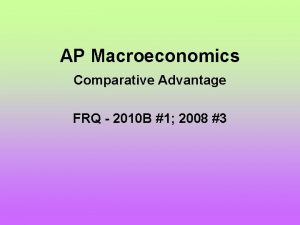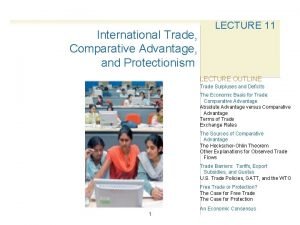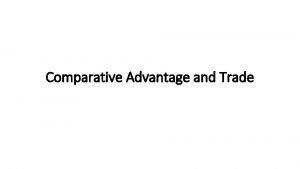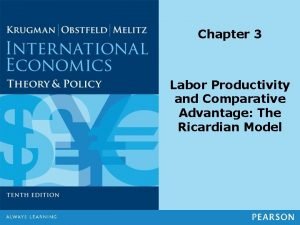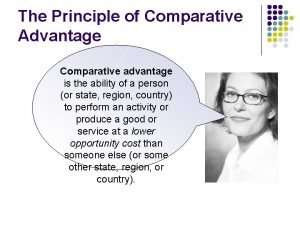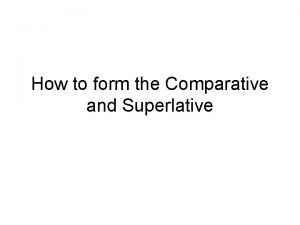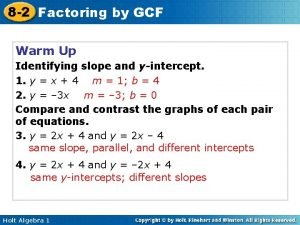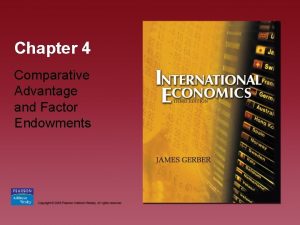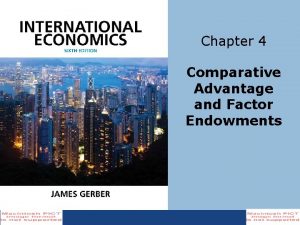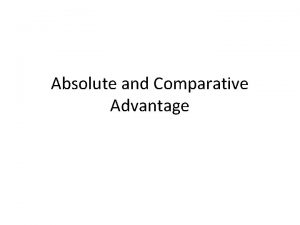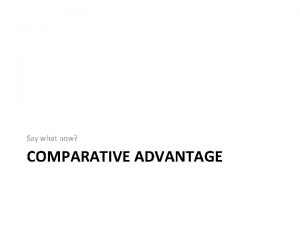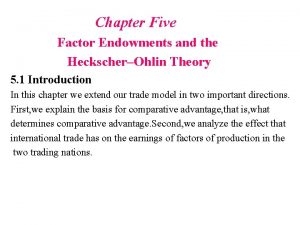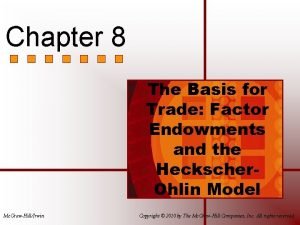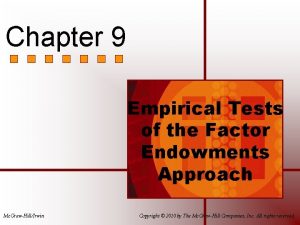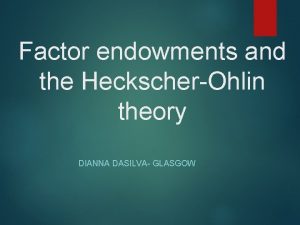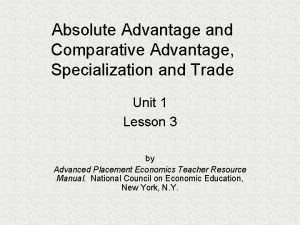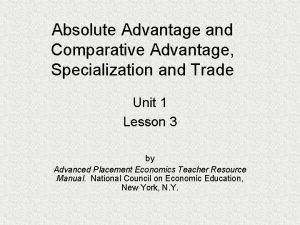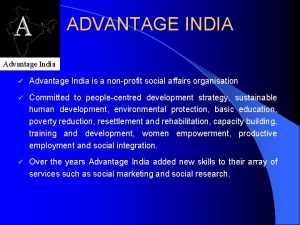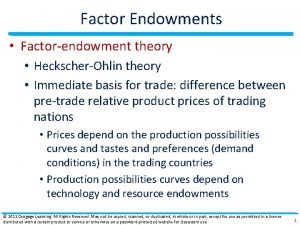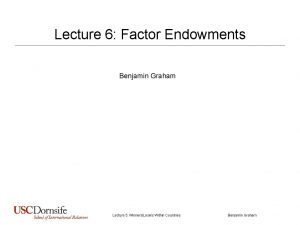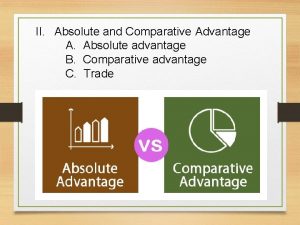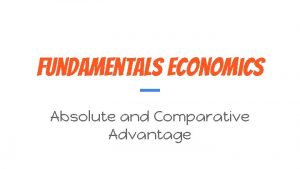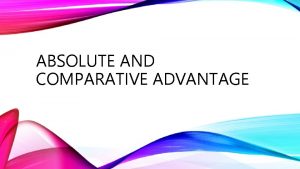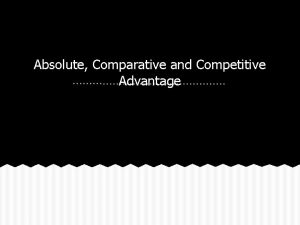Chapter 4 Comparative Advantage and Factor Endowments Copyright





























- Slides: 29

Chapter 4 Comparative Advantage and Factor Endowments Copyright © 2011 Pearson Addison-Wesley. All rights reserved.

Modern Trade Theory • Differences in factor endowments lead to differences in productivity • Nations are endowed with different levels of inputs Copyright © 2011 Pearson Addison-Wesley. All rights reserved. 4 -2

Heckscher-Ohlin (HO) Trade Model • A country’s comparative advantage lies in production of goods that intensively use relatively abundant factors – Factor abundance: relative abundance of a factor, and the factor’s relative cost is less – Relatively scarce resources are more expensive Copyright © 2011 Pearson Addison-Wesley. All rights reserved. 4 -3

TABLE 4. 1 An Example of Factor Abundance Copyright © 2011 Pearson Addison-Wesley. All rights reserved. 4 -4

Heckscher-Ohlin (HO) Trade Model • The U. S. is richly endowed with a wide variety of factors: natural resources, skilled labor, and physical capital • U. S. will export agricultural goods, machinery, scientific and engineering goods Copyright © 2011 Pearson Addison-Wesley. All rights reserved. 4 -5

Gains from Trade in the HO Model • Ricardian model: constant set of tradeoffs (costs) – One homogeneous input: labor • The HO model: (1) multiple inputs—labor capital, land, etc. —and (2) variations in the quality of inputs • PPC under the HO model – As produce more of one good, opportunity costs increases Copyright © 2011 Pearson Addison-Wesley. All rights reserved. 4 -6

Trade and Income Distribution • The HO model: – Labor can be divided into categories of different skill levels – Other types of inputs can be included – Industries can require different mixes of various inputs • Systematic relationship between the factor endowments of a country and the winners and losers from trade Copyright © 2011 Pearson Addison-Wesley. All rights reserved. 4 -7

The Stolper-Samuelson Theorem • Assumptions: – Labor earns wages proportionate to its skill level – Owners of capital earn profits – Landowners earn rents – The amount of income earned per unit of input depends on both the demand (derived demand) for inputs and the supply of inputs • Price of exported good rises, price of imported good falls Copyright © 2011 Pearson Addison-Wesley. All rights reserved. 4 -8

The Stolper-Samuelson Theorem • An increase in the price of a good raises the income earned by factors that are used intensively in its production (exports) • A fall in the price of a good lowers the income of the factors used intensively in its production (imports) Copyright © 2011 Pearson Addison-Wesley. All rights reserved. 4 -9

The Stolper-Samuelson Theorem • Not all factors in the export industries will be better off, and not all factors used in import competing industries get hurt • Abundant factors will benefit, while scarce ones will be hurt • Magnification Effect: the change in output prices has a magnified effect on incomes. Copyright © 2011 Pearson Addison-Wesley. All rights reserved. 4 -10

The Stolper-Samuelson Theorem • Ultimately, the effects on income of an opening of trade depends on the flexibility of the affected factors • More flexible the resources are to adjust, the less hurt they are. Copyright © 2011 Pearson Addison-Wesley. All rights reserved. 4 -11

Specific Factors Model • The HO model assumes that factors are mobile • The Specific Factors model assumes: – (1) land capital are immobile and cannot migrate (specific factors) – (2) labor is fully mobile and can migrate from one sector to another (variable factor) Copyright © 2011 Pearson Addison-Wesley. All rights reserved. 4 -12

Specific Factors Model • Endowment of specific factor plays a more critical role in determining comparative advantage – When trade opens, incomes rise for the owners of the abundant specific factor – Incomes decrease for specific factor in shrinking industry – Effect on labor is indeterminant – Prices in exporting industry rise, prices in importing industry fall Copyright © 2011 Pearson Addison-Wesley. All rights reserved. 4 -13

TABLE 4. 2 A Specific Factors Model Copyright © 2011 Pearson Addison-Wesley. All rights reserved. 4 -14

Case Study – Winners & Losers of NAFTA • Mexico: relatively abundant supplies of unskilled and semiskilled labor • US & Canada: relatively abundant supply of capital and skilled labor • Intrafirm Trade: Manufactures part of good in US and ships to Mexico for remainder • Moving production between US and Mexico has gains and losses Copyright © 2011 Pearson Addison-Wesley. All rights reserved. 4 -15

Table 4. 3 Major Products in U. S. -Mexico Trade Copyright © 2011 Pearson Addison-Wesley. All rights reserved. 4 -16

Table 4. 3 (continued) Major Products in U. S. Mexico Trade Copyright © 2011 Pearson Addison-Wesley. All rights reserved. 4 -17

Empirical Tests of the Theory of Comparative Advantage • Tests of theories based on factor endowments is difficult • Besides factor endowments, trade is affected by – – Technological differences Economies of scale Corporate structures Economic policies Copyright © 2011 Pearson Addison-Wesley. All rights reserved. 4 -18

Extension of the HO Model: The Product Cycle • Evolution of manufactured goods and technology • Early Stage: Likely in industrial countries – High income consumers – Scientific and engineering inputs – Capital • Middle Phase: Shifts to countries with low labor costs, standardized technology • Late Phase: More output shifted to developing countries, industrialized ones focus on new goods Copyright © 2011 Pearson Addison-Wesley. All rights reserved. 4 -19

FIGURE 4. 5 The Product Cycle in High-Income Countries Copyright © 2011 Pearson Addison-Wesley. All rights reserved. 4 -20

FIGURE 4. 6 The Product Cycle in Low-Income Countries Copyright © 2011 Pearson Addison-Wesley. All rights reserved. 4 -21

Table 4. 4 Top Ten Chinese Exports to the United States, 2008 Copyright © 2011 Pearson Addison-Wesley. All rights reserved. 4 -22

Foreign Trade versus Foreign Investment • Based on product cycle, firms prefer to invest abroad than export • Substitute foreign investment foreign trade • Intrafirm Trade – Internationl trade between parent company and foreign-owned affiliate Copyright © 2011 Pearson Addison-Wesley. All rights reserved. 4 -23

OLI Theory OLI theory (Ownership-Location. Internalization) – Firms investing abroad own an asset that gives them a competitive advantage (Ownership) – Firms seek a production location that offers them advantages (Location) – Firms try to internally capture the advantages of foreign asset ownership (Internalization) Copyright © 2011 Pearson Addison-Wesley. All rights reserved. 4 -24

Off-shoring and Outsourcing • Off-shoring: Some or all of a firm’s activities move to a location outside the home country • Outsourcing: Reassignment of activities to another firm, either inside or outside the home country • Can use foreign affiliate • Technology makes it easier • Benefits from trading services should be the same as traded goods. Copyright © 2011 Pearson Addison-Wesley. All rights reserved. 4 -25

Table 4. 5 U. S. Multinational Corporations and Production Outside the United States Copyright © 2011 Pearson Addison-Wesley. All rights reserved. 4 -26

Off-Shoring by US Multinational Corp. • Productivity increases enable greater share of value-added output with smaller share of employment • Motivation to off-shore is access to market and produce specialized products not to escape regulations or find low wages • Most off-shoring occurs in high income, high wage economies Copyright © 2011 Pearson Addison-Wesley. All rights reserved. 4 -27

Migration and Trade • Three primary factors: – Supply-push factors: forces inside a nation that cause people inside a nation to leave – Demand-pull factors: forces that pull a migrant to a particular country, or place within a country – Social networks: ability of migrants to congregate near family or community members to more easily assimilate into new locale Copyright © 2011 Pearson Addison-Wesley. All rights reserved. 4 -28

The Impact of Trade on Wages and Jobs • Short-run – Reduce jobs in an industry that is not competitive – Increase jobs in competitive industries • In medium- and long-run, trade has very little effect on the number of jobs – Jobs are dependent on: • Labor market policies • Incentives to work • Government macroeconomic policies Copyright © 2011 Pearson Addison-Wesley. All rights reserved. 4 -29
 Factor endowments definition
Factor endowments definition Ppf
Ppf 7 habits paradigm
7 habits paradigm Selling endowments
Selling endowments Actual mechanical advantage vs ideal mechanical advantage
Actual mechanical advantage vs ideal mechanical advantage Specialization and comparative advantage
Specialization and comparative advantage When discussing comparative and absolute advantage
When discussing comparative and absolute advantage Form factor and crest factor
Form factor and crest factor Lcm of 12 and 18
Lcm of 12 and 18 Trade vocabulary
Trade vocabulary Starbucks competitive advantage
Starbucks competitive advantage Comparative advantage calculation example
Comparative advantage calculation example How to calculate comparative advantage
How to calculate comparative advantage Gains from trade
Gains from trade Comparative advantage example
Comparative advantage example How to calculate comparative advantage
How to calculate comparative advantage Comparative advantage persuasive speech
Comparative advantage persuasive speech Comparative advantage numerical example
Comparative advantage numerical example Trimalawn
Trimalawn How to calculate comparative advantage
How to calculate comparative advantage Comparative advantage
Comparative advantage Activity 26.5 specialization and trade answers
Activity 26.5 specialization and trade answers Calculating comparative advantage
Calculating comparative advantage Ap macroeconomics frq 2010
Ap macroeconomics frq 2010 Comparative advantage
Comparative advantage Advantedge power island
Advantedge power island Comparative advantage example
Comparative advantage example How to find comparative advantage
How to find comparative advantage Calm comparative and superlative
Calm comparative and superlative Factoring examples
Factoring examples
